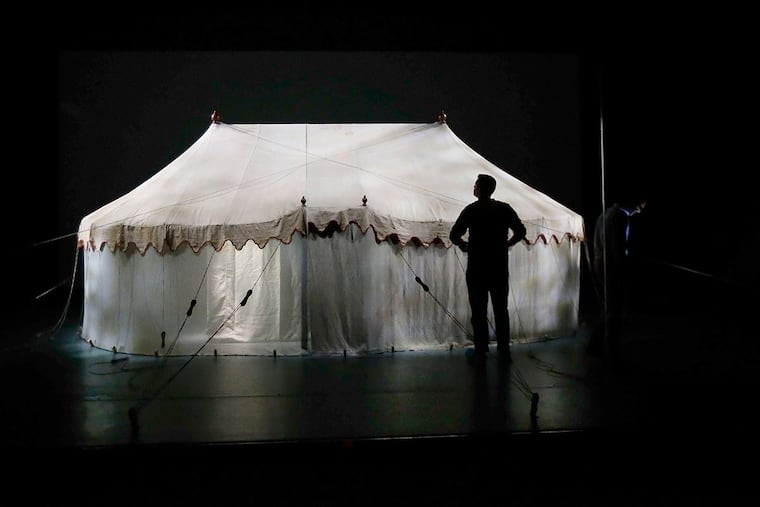Museum of the American Revolution: See George Washington's battlefield tent
Formally known as a “marquee,” the tent has been called the Oval Office – before there was an Oval Office. But its aged, weathered sides are more personal than that celebrated space, serving to humanize the sometimes-distant general and future president.

The field tent that Gen. George Washington used as home and office for much of the war is the main attraction at Philadelphia's new Museum of the American Revolution, where it is displayed behind glass in an auditorium all to itself and dramatically presented for visitors' consideration accompanied by an 11-minute video.
Conservator Virginia Whelan, who painstakingly stabilized nearly 600 "losses" on the tent's linen top and sides, called it simply "an icon of our country."
Michael C. Quinn, president and chief executive of the Museum of the American Revolution, which owns the roughly 22-by-15-foot tent, stabilized holes and all, believes it may be the only surviving tent from the Revolution.
Formally known as a "marquee," the tent has been called the Oval Office -- before there was an Oval Office. But its aged, weathered sides are more personal than that celebrated space, serving to humanize the sometimes-distant general and future president.
When Washington was encamped at Valley Forge in the winter of 1777-78, he ordered the tent from Reading and then used it after he decamped as the focal point of his life in the field, the one marginally private place he could retreat to for reading, writing, and sleeping.
Wherever Washington was during the war after 1778, his tent served as home; it is where he bunked and wrote during the Siege of Yorktown, Va., which yielded British surrender in 1781.
After Washington's death at Mount Vernon in 1799, the tent passed into Martha Washington's possession. Her grandson George Washington Parke Custis bought the tent from his grandmother's estate and then stored it at his own Virginia home, Arlington House.
G.W.P. Custis' daughter Mary Anna Custis Lee, who was married to Gen. Robert E. Lee, kept the tent, which was seized from Arlington House by federal troops at the end of the Civil War. It was eventually returned to the Lee family and was sold around 1908 to W. Herbert Burk for about $5,000.
Burk saw it as the defining artifact of his Valley Forge Historical Museum -- and he may have believed that Washington used the tent at Valley Forge. He did not.
As steward of Burk's historical society collection, the Museum of the American Revolution has ramped up display of the tent. Burk initially had it set up in a field, and later crammed into too-small quarters at the historical society, but the tent now has its own 100-seat auditorium. The great American artifact and its video presentation are designed to be the end-point and climax of any visit to the museum.
"It is a powerful symbol of American freedom," museum president Quinn said.